LG 32LJ600U-ZA Schematic
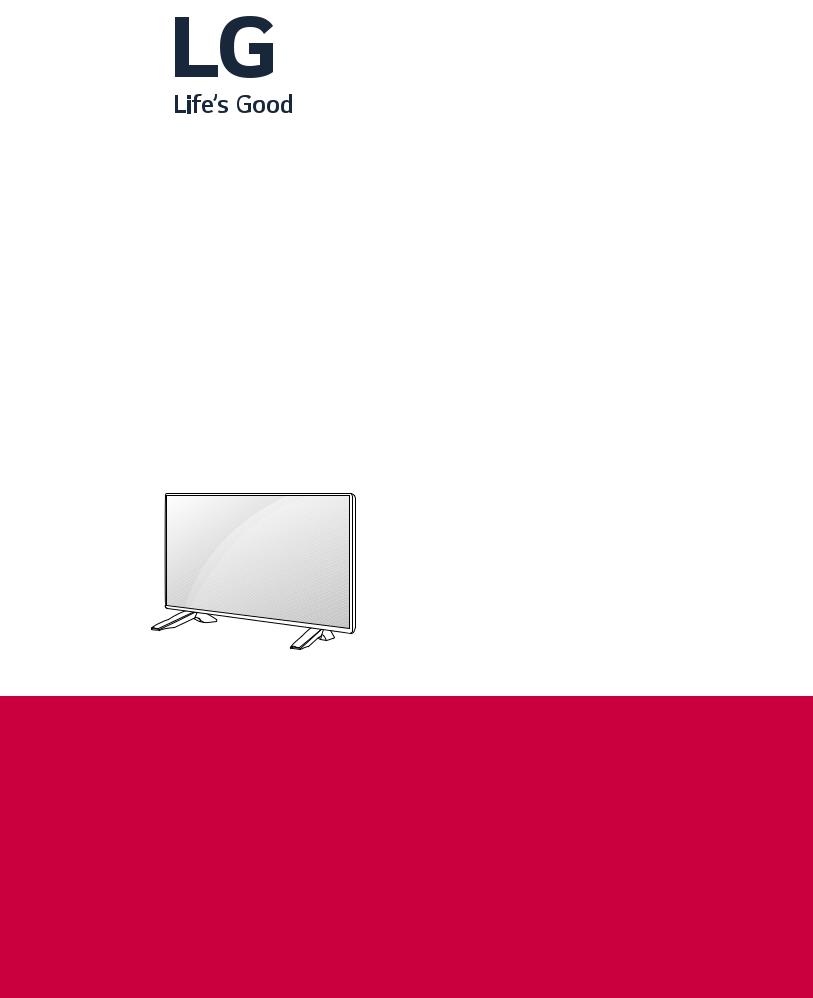
CONFIDENTIAL
LED TV
SERVICE MANUAL
CHASSIS : LD75K
MODEL : 32LJ600U 32LJ600U-ZA
CAUTION
BEFORE SERVICING THE CHASSIS, READ THE SAFETY PRECAUTIONS IN THIS MANUAL.
P/NO : MFL69886201 (1709-REV01)
Copyright © 2017 LG Electronics Inc. All rights reserved. Only training and service purposes.

CONTENTS
CONTENTS .............................................................................................. |
2 |
SAFETY PRECAUTIONS ......................................................................... |
3 |
SERVICING PRECAUTIONS ................................................................... |
4 |
SPECIFICATION ....................................................................................... |
6 |
SOFTWARE UPDATE............................................................................. |
10 |
BLOCK DIAGRAM ................................................................................. |
11 |
EXPLODED VIEW .................................................................................. |
17 |
DISASSEMBLY GUIDE .......................................................................... |
18 |
TROUBLE SHOOTING GUIDE ................................................ |
APPENDIX |
- 2 - |
Copyright © |
LG Electronics. Inc. All rights reserved. |
|
Only for training and service purposes. |
|

SAFETY PRECAUTIONS
IMPORTANT SAFETY NOTICE
Many electrical and mechanical parts in this chassis have special safety-related characteristics. These parts are identified by  in the Exploded View.
in the Exploded View.
It is essential that these special safety parts should be replaced with the same components as recommended in this manual to prevent Shock, Fire, or other Hazards.
Do not modify the original design without permission of manufacturer.
General Guidance
An isolation Transformer should always be used during the servicing of a receiver whose chassis is not isolated from the AC power line. Use a transformer of adequate power rating as this protects the technician from accidents resulting in personal injury from electrical shocks.
It will also protect the receiver and it's components from being damaged by accidental shorts of the circuitry that may be inadvertently introduced during the service operation.
If any fuse (or Fusible Resistor) in this TV receiver is blown, replace it with the specified.
When replacing a high wattage resistor (Oxide Metal Film Resistor, over 1 W), keep the resistor 10 mm away from PCB.
Keep wires away from high voltage or high temperature parts.
Before returning the receiver to the customer,
always perform an AC leakage current check on the exposed metallic parts of the cabinet, such as antennas, terminals, etc., to be sure the set is safe to operate without damage of electrical shock.
Leakage Current Cold Check(Antenna Cold Check)
With the instrument AC plug removed from AC source, connect an electrical jumper across the two AC plug prongs. Place the AC switch in the on position, connect one lead of ohm-meter to the AC plug prongs tied together and touch other ohm-meter lead in turn to each exposed metallic parts such as antenna terminals, phone jacks, etc.
If the exposed metallic part has a return path to the chassis, the measured resistance should be between 1 MΩ and 5.2 MΩ.
When the exposed metal has no return path to the chassis the reading must be infinite.
An other abnormality exists that must be corrected before the receiver is returned to the customer.
Leakage Current Hot Check (See below Figure) Plug the AC cord directly into the AC outlet.
Do not use a line Isolation Transformer during this check.
Connect 1.5 K / 10 watt resistor in parallel with a 0.15 uF capacitor between a known good earth ground (Water Pipe, Conduit, etc.) and the exposed metallic parts.
Measure the AC voltage across the resistor using AC voltmeter with 1000 ohms/volt or more sensitivity.
Reverse plug the AC cord into the AC outlet and repeat AC voltage measurements for each exposed metallic part. Any voltage measured must not exceed 0.75 volt RMS which is corresponds to 0.5 mA.
In case any measurement is out of the limits specified, there is possibility of shock hazard and the set must be checked and repaired before it is returned to the customer.
Leakage Current Hot Check circuit
- 3 - |
Copyright © |
LG Electronics. Inc. All rights reserved. |
|
Only for training and service purposes. |
|

SERVICING PRECAUTIONS
CAUTION: Before servicing receivers covered by this service manual and its supplements and addenda, read and follow the SAFETY PRECAUTIONS on page 3 of this publication.
NOTE: If unforeseen circumstances create conflict between the following servicing precautions and any of the safety precautions on page 3 of this publication, always follow the safety precautions. Remember: Safety First.
General Servicing Precautions
1.Always unplug the receiver AC power cord from the AC power source before;
a.Removing or reinstalling any component, circuit board module or any other receiver assembly.
b.Disconnecting or reconnecting any receiver electrical plug or other electrical connection.
c.Connecting a test substitute in parallel with an electrolytic capacitor in the receiver.
CAUTION: A wrong part substitution or incorrect polarity installation of electrolytic capacitors may result in an explosion hazard.
2.Test high voltage only by measuring it with an appropriate high voltage meter or other voltage measuring device (DVM, FETVOM, etc) equipped with a suitable high voltage probe. Do not test high voltage by "drawing an arc".
3.Do not spray chemicals on or near this receiver or any of its assemblies.
4.Unless specified otherwise in this service manual, clean electrical contacts only by applying the following mixture to the contacts with a pipe cleaner, cotton-tipped stick or comparable non-abrasive applicator; 10 % (by volume) Acetone and 90 % (by volume) isopropyl alcohol (90 % - 99 % strength)
CAUTION: This is a flammable mixture.
Unless specified otherwise in this service manual, lubrication of contacts in not required.
5.Do not defeat any plug/socket B+ voltage interlocks with which receivers covered by this service manual might be equipped.
6.Do not apply AC power to this instrument and/or any of its electrical assemblies unless all solid-state device heat sinks are correctly installed.
7.Always connect the test receiver ground lead to the receiver chassis ground before connecting the test receiver positive lead.
Always remove the test receiver ground lead last.
8.Use with this receiver only the test fixtures specified in this service manual.
CAUTION: Do not connect the test fixture ground strap to any heat sink in this receiver.
Electrostatically Sensitive (ES) Devices
Some semiconductor (solid-state) devices can be damaged easily by static electricity. Such components commonly are called Electrostatically Sensitive (ES) Devices. Examples of typical ES devices are integrated circuits and some field-effect transistors and semiconductor “chip” components. The following techniques should be used to help reduce the incidence of component damage caused by static by static electricity.
1.Immediately before handling any semiconductor component or semiconductor-equipped assembly, drain off any electrostatic charge on your body by touching a known earth ground. Alternatively, obtain and wear a commercially available discharging wrist strap device, which should be removed to prevent potential shock reasons prior to applying power to the unit under test.
2.After removing an electrical assembly equipped with ES devices, place the assembly on a conductive surface such as aluminum foil, to prevent electrostatic charge buildup or exposure of the assembly.
3.Use only a grounded-tip soldering iron to solder or unsolder ES devices.
4.Use only an anti-static type solder removal device. Some solder removal devices not classified as “anti-static” can generate electrical charges sufficient to damage ES devices.
5.Do not use freon-propelled chemicals. These can generate electrical charges sufficient to damage ES devices.
6.Do not remove a replacement ES device from its protective package until immediately before you are ready to install it. (Most replacement ES devices are packaged with leads electrically shorted together by conductive foam, aluminum foil or comparable conductive material).
7.Immediately before removing the protective material from the leads of a replacement ES device, touch the protective material to the chassis or circuit assembly into which the device will be installed.
CAUTION: Be sure no power is applied to the chassis or circuit, and observe all other safety precautions.
8.Minimize bodily motions when handling unpackaged replacement ES devices. (Otherwise harmless motion such as the brushing together of your clothes fabric or the lifting of your foot from a carpeted floor can generate static electricity sufficient to damage an ES device.)
General Soldering Guidelines
1.Use a grounded-tip, low-wattage soldering iron and appropriate tip size and shape that will maintain tip temperature within the range or 500 °F to 600 °F.
2.Use an appropriate gauge of RMA resin-core solder composed of 60 parts tin/40 parts lead.
3.Keep the soldering iron tip clean and well tinned.
4.Thoroughly clean the surfaces to be soldered. Use a mall wirebristle (0.5 inch, or 1.25 cm) brush with a metal handle.
Do not use freon-propelled spray-on cleaners.
5.Use the following unsoldering technique
a.Allow the soldering iron tip to reach normal temperature. (500 °F to 600 °F)
b.Heat the component lead until the solder melts.
c.Quickly draw the melted solder with an anti-static, suctiontype solder removal device or with solder braid. CAUTION: Work quickly to avoid overheating the circuit board printed foil.
6.Use the following soldering technique.
a.Allow the soldering iron tip to reach a normal temperature (500 °F to 600 °F)
b.First, hold the soldering iron tip and solder the strand against the component lead until the solder melts.
c.Quickly move the soldering iron tip to the junction of the component lead and the printed circuit foil, and hold it there only until the solder flows onto and around both the component lead and the foil.
CAUTION: Work quickly to avoid overheating the circuit board printed foil.
d.Closely inspect the solder area and remove any excess or splashed solder with a small wire-bristle brush.
- 4 - |
Copyright © |
LG Electronics. Inc. All rights reserved. |
|
Only for training and service purposes. |
|

IC Remove/Replacement
Some chassis circuit boards have slotted holes (oblong) through which the IC leads are inserted and then bent flat against the circuit foil. When holes are the slotted type, the following technique should be used to remove and replace the IC. When working with boards using the familiar round hole, use the standard technique as outlined in paragraphs 5 and 6 above.
Removal
1.Desolder and straighten each IC lead in one operation by gently prying up on the lead with the soldering iron tip as the solder melts.
2.Draw away the melted solder with an anti-static suction-type solder removal device (or with solder braid) before removing the IC.
Replacement
1.Carefully insert the replacement IC in the circuit board.
2.Carefully bend each IC lead against the circuit foil pad and solder it.
3.Clean the soldered areas with a small wire-bristle brush. (It is not necessary to reapply acrylic coating to the areas).
"Small-Signal" Discrete Transistor
Removal/Replacement
1.Remove the defective transistor by clipping its leads as close as possible to the component body.
2.Bend into a "U" shape the end of each of three leads remaining on the circuit board.
3.Bend into a "U" shape the replacement transistor leads.
4.Connect the replacement transistor leads to the corresponding leads extending from the circuit board and crimp the "U" with long nose pliers to insure metal to metal contact then solder each connection.
Power Output, Transistor Device
Removal/Replacement
1.Heat and remove all solder from around the transistor leads.
2.Remove the heat sink mounting screw (if so equipped).
3.Carefully remove the transistor from the heat sink of the circuit board.
4.Insert new transistor in the circuit board.
5.Solder each transistor lead, and clip off excess lead.
6.Replace heat sink.
Diode Removal/Replacement
1.Remove defective diode by clipping its leads as close as possible to diode body.
2.Bend the two remaining leads perpendicular y to the circuit board.
3.Observing diode polarity, wrap each lead of the new diode around the corresponding lead on the circuit board.
4.Securely crimp each connection and solder it.
5.Inspect (on the circuit board copper side) the solder joints of the two "original" leads. If they are not shiny, reheat them and if necessary, apply additional solder.
Fuse and Conventional Resistor
Removal/Replacement
1.Clip each fuse or resistor lead at top of the circuit board hollow stake.
2.Securely crimp the leads of replacement component around notch at stake top.
3.Solder the connections.
CAUTION: Maintain original spacing between the replaced component and adjacent components and the circuit board to prevent excessive component temperatures.
Circuit Board Foil Repair
Excessive heat applied to the copper foil of any printed circuit board will weaken the adhesive that bonds the foil to the circuit board causing the foil to separate from or "lift-off" the board. The following guidelines and procedures should be followed whenever this condition is encountered.
At IC Connections
To repair a defective copper pattern at IC connections use the following procedure to install a jumper wire on the copper pattern side of the circuit board. (Use this technique only on IC connections).
1.Carefully remove the damaged copper pattern with a sharp knife. (Remove only as much copper as absolutely necessary).
2.carefully scratch away the solder resist and acrylic coating (if used) from the end of the remaining copper pattern.
3.Bend a small "U" in one end of a small gauge jumper wire and carefully crimp it around the IC pin. Solder the IC connection.
4.Route the jumper wire along the path of the out-away copper pattern and let it overlap the previously scraped end of the good copper pattern. Solder the overlapped area and clip off any excess jumper wire.
At Other Connections
Use the following technique to repair the defective copper pattern at connections other than IC Pins. This technique involves the installation of a jumper wire on the component side of the circuit board.
1.Remove the defective copper pattern with a sharp knife. Remove at least 1/4 inch of copper, to ensure that a hazardous condition will not exist if the jumper wire opens.
2.Trace along the copper pattern from both sides of the pattern break and locate the nearest component that is directly connected to the affected copper pattern.
3.Connect insulated 20-gauge jumper wire from the lead of the nearest component on one side of the pattern break to the lead of the nearest component on the other side.
Carefully crimp and solder the connections.
CAUTION: Be sure the insulated jumper wire is dressed so the it does not touch components or sharp edges.
- 5 - |
Copyright © |
LG Electronics. Inc. All rights reserved. |
|
Only for training and service purposes. |
|

SPECIFICATION
NOTE : Specifications and others are subject to change without notice for improvement.
1. Application range |
3. Test method |
|
This specification is applied to the LED TV used LD75H |
(1) |
Performance: LGE TV test method followed |
chassis. |
(2) |
Demanded other specification |
- Safety : CE, IEC specification - EMC : CE, IEC
2. Requirement for Test
Each part is tested as below without special notice.
(1)Temperature : 25°C ± 5°C (77°C ± 9°C), CST : 40°C ± 5°C
(2)Relative Humidity : 65 % ± 10 %
(3)Power Voltage :
Standard input voltage (AC100~240V @ 50/60Hz) Standard Voltage of each product is marked by models
(4)Specification and performance of each parts are followed each drawing and specification by part number in accordance with BOM.
(5)The receiver must be operated for about 5 minutes prior to the adjustment
4.Model General Specification
No. |
Item |
Specification |
Remarks |
|
|
|
DTV & Analog (Total 37 countries) |
|
|
|
DTV (MPEG2/4, DVB-T) : 26 countries |
|
|
|
Germany, Netherland, Switzerland, Hungary, Austria, Slovenia, Bulgaria, |
|
|
|
France, Spain, , Belgium, Luxemburg, Greece, Czech, Turkey, Moroco, |
|
|
|
Ireland, Latvia, Estonia, Lithuania, Poland, Portugal, Romania, Albania, |
|
|
|
Bosnia, Slovakia, Beralus |
|
|
|
DTV (MPEG2/4, DVB-T2) :11 countries |
|
|
|
UK(Ireland), Sweden, Denmark, Finland, Norway, Ukraine, Kazakhstan |
|
|
|
Russia, Italy, Croatia, Serbia |
|
|
|
DTV (MPEG2/4, DVB-C) : 37 countries |
|
|
|
Germany, Netherland, Switzerland, Hungary, Austria, Slovenia, Bulgaria, |
|
|
|
France, Spain, Italy, Belgium, Russia, Luxemburg, Greece, Czech, Cro- |
|
|
|
atia, Turkey, Moroco, Ireland, Latvia, Estonia, Lithuania, Poland, Portu- |
|
|
|
gal, Romania, Albania, Bosnia, Serbia, Slovakia, Beralus, UK, Sweden, |
|
|
|
Denmark, Finland, Norway, Ukraine, Kazakhstan |
1 |
Market |
EU(PAL Market-37Countries) |
DTV (MPEG2/4,DVB-S) : 37 countries |
|
|
|
|
|
|
|
Germany, Netherland, Switzerland, Hungary, Austria, Slovenia, Bulgaria, |
|
|
|
France, Spain,Belgium, Luxemburg, Greece, Czech, Turkey, Moroco, |
|
|
|
Ireland, Latvia, Estonia, Lithuania, Poland, Portugal, Romania, Albania, |
|
|
|
Bosnia, Slovakia, Beralus, UK(Ireland), Sweden, Denmark, Finland, |
|
|
|
Norway, Ukraine, Kazakhstan,Russia, Italy, Croatia, Serbia |
|
|
|
Supported satellite : 35 satellites |
|
|
|
ABS1 75.0E , AMOS 4.0W , ASIASAT3S 105.5E , ASTRA 19.2E , AS- |
|
|
|
TRA 23.5E , ASTRA 28.2E , ASTRA 4.8E, ATLANTIC BIRD2 8.0W , AT- |
|
|
|
LANTIC BIRD3 5.0W , BADR 26.0E , DIRECTV-1R 56.0E , EUROBIRD |
|
|
|
9A 9.0E , EUROBIRD3 33.0E , EUTELSAT 36 A/B 36.0E , |
|
|
|
EUTELSAT W2A 10.0E , EUTELSAT W3A 7.0E , EUTELSAT7WA 7.3W |
|
|
|
EUTELSAT 16.0E , EXPRESS AM1 40.0E , EXPRESS AM3 140.0E , |
|
|
|
EXPRESS AM33 96.5E , HELLASSAT 39.0E , HISPASAT 1CDE 30.0W |
|
|
|
HOTBIRD 13.0E , INTELSAT10&7 68.5E , INTELSAT15 85.2E , INTEL- |
|
|
|
SAT1R 50.0W, INTELSAT903 33.5W , INTELSAT904 60.0E, |
|
|
|
NILESAT 7.0W , NSS12 57.0E , THOR 0.8W , TURKSAT 42.0E , |
|
|
|
YAMAL201 90.0E , OTHER |
- 6 - |
Copyright © |
LG Electronics. Inc. All rights reserved. |
|
Only for training and service purposes. |
|

No. |
Item |
Specification |
|
Remarks |
|
|
|
1) Digital TV |
|
|
|
|
|
- DVB-T/T2 |
|
|
|
|
|
- DVB-C |
|
|
|
2 |
Television system |
- DVB-S/S2 |
|
|
|
|
|
2) Analogue TV |
|
|
|
|
|
- PAL/SECAM B/G/I/D/K |
|
|
|
|
|
- SECAM L/L’ |
|
|
|
|
|
1) Digital TV |
|
|
|
|
|
- VHF, UHF |
|
|
|
|
|
- C-Band, Ku-Band |
|
|
|
3 |
Program coverage |
2) Analogue TV |
|
|
|
- VHF : E2 to E12 |
|
|
|||
|
|
|
|
||
|
|
- UHF : E21 to E69 |
|
|
|
|
|
- CATV : S1 to S20 |
|
|
|
|
|
- HYPER : S21 to S47 |
|
|
|
|
|
|
► DVB-T |
|
|
|
|
|
- Guard Interval(Bitrate_Mbit/s) |
||
|
|
|
1/4, 1/8, 1/16, 1/32 |
||
|
|
|
- Modulation : Code Rate |
||
|
|
|
QPSK |
: 1/2, 2/3, 3/4, 5/6, 7/8 |
|
|
|
|
16-QAM |
: 1/2, 2/3, 3/4, 5/6, 7/8 |
|
|
|
|
64-QAM |
: 1/2, 2/3, 3/4, 5/6, 7/8 |
|
|
|
|
► DVB-T2 (Model : *L*V*-Z* (T2 only Model)) |
||
|
|
|
- Guard Interval(Bitrate_Mbit/s) |
||
|
|
|
1/4, 1/8, 1/16, 1/32, 1/128, 19/128, 19/256, |
||
|
|
|
- Modulation : Code Rate |
||
|
|
|
QPSK |
: 1/2, 2/5, 2/3, 3/4, 5/6 |
|
|
|
Analog : Upper Heterodyne |
16-QAM |
: 1/2, 2/5, 2/3, 3/4, 5/6 |
|
4 |
Receiving system |
64-QAM |
: 1/2, 2/5, 2/3, 3/4, 5/6 |
||
Digital : COFDM, QAM |
|||||
|
|
256-QAM : 1/2, 2/5, 2/3, 3/4, 5/6 |
|||
|
|
|
|||
|
|
|
► DVB-C |
|
|
|
|
|
- Symbolrate : |
||
|
|
|
4.0Msymbols/s to 7.2Msymbols/s |
||
|
|
|
- Modulation : |
||
|
|
|
16QAM, 64-QAM, 128-QAM and 256-QAM |
||
|
|
|
► DVB-S/S2 |
||
|
|
|
- symbolrate |
||
|
|
|
DVB-S2 (8PSK / QPSK) : 2 ~ 45Msymbol/s |
||
|
|
|
DVB-S (QPSK) : 2 ~ 45Msymbol/s |
||
|
|
|
- viterbi |
|
|
|
|
|
DVB-S mode : 1/2, 2/3, 3/4, 5/6, 7/8 |
||
|
|
|
DVB-S2 mode : 1/2, 2/3, 3/4, 3/5, 4/5, 5/6, 8/9, 9/10 |
||
5 |
SCART (N/A) |
|
DELETED |
|
|
6 |
Video Input RCA (1EA) |
PAL, SECAM, NTSC4.43 |
4 System :PAL, SECAM, NTSC4.43, PAL60, Hybrid Type |
||
7 |
Head phone out |
Antenna, AV, Component, HDMI1, |
|
|
|
HDMI2, USB1, USB2 |
|
|
|||
|
|
|
|
||
8 |
Component Input (1EA) |
Y/Cb/Cr |
Hybrid Type |
||
Y/Pb/Pr |
|||||
|
|
|
|
||
|
|
HDMI1-DTV |
|
|
|
9 |
HDMI Input (3EA) |
HDMI2-DTV |
|
|
|
|
|
HDMI3-DTV |
|
|
|
|
|
DVI Audio |
|
|
|
10 |
Audio Input (3EA) |
Component |
L/R Input |
|
|
|
|
AV |
|
|
|
11 |
SPDIF out |
SPDIF out |
|
|
|
12 |
USB (2EA) |
EMF, DivX HD, For SVC (download) |
JPEG, MP3, DivX HD |
||
13 |
Ethernet Connect (1EA) |
Ethernet Connect |
|
|
|
14 |
PCMCIA Card slot (1EA) |
PCMCIA slot |
|
|
|
- 7 - |
Copyright © |
LG Electronics. Inc. All rights reserved. |
|
Only for training and service purposes. |
|

5. External Input Support format
5.1.Video resolutions (2D)
(1)Component Video Input (Y, PB, PR)
No. |
|
|
Specification |
|
|
|
|
|
|
||
Resolution |
H-freq (kHz) |
V-freq (Hz) |
Proposed |
||
|
|||||
|
|
|
|
|
|
1 |
720*480 |
15.73 |
60.00 |
SDTV, DVD 480i |
|
|
|
|
|
|
|
2 |
720*480 |
15.73 |
59.94 |
SDTV, DVD 480i |
|
|
|
|
|
|
|
3 |
720*480 |
31.47 |
59.94 |
480p |
|
|
|
|
|
|
|
4 |
720*480 |
31.50 |
60.00 |
480p |
|
|
|
|
|
|
|
5 |
720*576 |
15.62 |
50.00 |
SDTV, DVD 625 Line |
|
6 |
720*576 |
31.25 |
50.00 |
HDTV 576p |
|
|
|
|
|
|
|
7 |
1280*720 |
37.50 |
50.00 |
HDTV 720p |
|
|
|
|
|
|
|
8 |
1280*720 |
44.96 |
59.94 |
HDTV 720p |
|
|
|
|
|
|
|
9 |
1280*720 |
45.00 |
60.00 |
HDTV 720p |
|
|
|
|
|
|
|
10 |
1920*1080 |
28.12 |
50.00 |
HDTV 1080i |
|
|
|
|
|
|
|
11 |
1920*1080 |
33.75 |
60.00 |
HDTV 1080i |
|
12 |
1920*1080 |
33.72 |
59.94 |
HDTV 1080i |
|
13 |
1920*1080 |
56.25 |
50.00 |
HDTV 1080p |
|
14 |
1920*1080 |
67.50 |
60.00 |
HDTV 1080p |
(2) HDMI Input (DTV)
No. |
Resolution |
H-freq (kHz) |
V-freq (kHz) |
Proposed |
Remarks |
|
|
|
|
|
|
1 |
640*480 |
31.46 |
59.94 |
SDTV 480P |
|
|
|
|
|
|
|
2 |
640*480 |
31.50 |
60.00 |
SDTV 480P |
|
|
|
|
|
|
|
3 |
720*480 |
15.73 |
59.94 |
SDTV, DVD 480I(525I) |
|
|
|
|
|
|
|
4 |
720*480 |
15.75 |
60.00 |
SDTV, DVD 480I(525I) |
Spec. out but display |
|
|
|
|
|
|
5 |
720*576 |
15.62 |
50.00 |
SDTV, DVD 576I(625I) 50Hz |
|
|
|
|
|
|
|
6 |
720*480 |
31.47 |
59.94 |
SDTV 480P |
|
7 |
720*480 |
31.50 |
60.00 |
SDTV 480P |
|
8 |
720*576 |
31.25 |
50.00 |
SDTV 576P |
|
9 |
1280*720 |
44.96 |
59.94 |
HDTV 720P |
|
10 |
1280*720 |
45.00 |
60.00 |
HDTV 720P |
|
11 |
1280*720 |
37.50 |
50.00 |
HDTV 720P |
|
12 |
1920*1080 |
28.12 |
50.00 |
HDTV 1080I |
|
|
|
|
|
|
|
13 |
1920*1080 |
33.72 |
59.94 |
HDTV 1080I |
|
|
|
|
|
|
|
14 |
1920*1080 |
33.75 |
60.00 |
HDTV 1080I |
|
|
|
|
|
|
|
15 |
1920*1080 |
26.97 |
23.97 |
HDTV 1080P |
|
|
|
|
|
|
|
16 |
1920*1080 |
27.00 |
24.00 |
HDTV 1080P |
|
|
|
|
|
|
|
17 |
1920*1080 |
33.71 |
29.97 |
HDTV 1080P |
|
|
|
|
|
|
|
18 |
1920*1080 |
33.75 |
30.00 |
HDTV 1080P |
|
19 |
1920*1080 |
56.25 |
50.00 |
HDTV 1080P |
|
20 |
1920*1080 |
67.43 |
59.94 |
HDTV 1080P |
|
21 |
1920*1080 |
67.50 |
60.00 |
HDTV 1080P |
|
- 8 - |
Copyright © |
LG Electronics. Inc. All rights reserved. |
|
Only for training and service purposes. |
|

(3) HDMI Input (PC)
No. |
Resolution |
H-freq (kHz) |
V-freq (Hz) |
Proposed |
Remarks |
1 |
640 x 350 @70Hz |
31.46 |
70.09 |
EGA |
|
2 |
720 x 400 @70Hz |
31.46 |
70.08 |
DOS |
|
3 |
640 x 480 @60Hz |
31.46 |
59.94 |
VESA(VGA) |
|
4 |
800 x 600 @60Hz |
37.87 |
60.31 |
VESA(SVGA) |
|
|
|
|
|
|
|
5 |
1024 x 768 @60Hz |
48.36 |
60.00 |
VESA(XGA) |
|
|
|
|
|
|
|
6 |
1152 x 864 @60Hz |
54.34 |
60.05 |
VESA |
|
|
|
|
|
|
|
7 |
1280 x 1024 @60Hz |
63.98 |
60.02 |
VESA(SXGA) |
FHD only |
|
|
|
|
|
|
8 |
1360 x 768 @60Hz |
47.71 |
60.01 |
VESA(WXGA) |
|
|
|
|
|
|
|
9 |
1920 x 1080 @60Hz |
67.50 |
60.00 |
WUXGA(CEA 861D) |
FHD only |
|
|
|
|
|
|
- 9 - |
Copyright © |
LG Electronics. Inc. All rights reserved. |
|
Only for training and service purposes. |
|
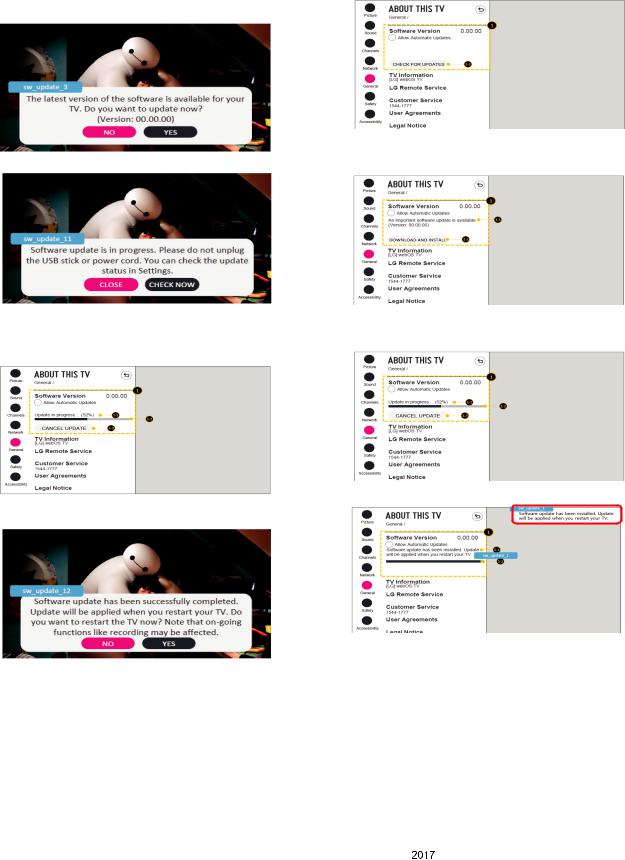
SOFTWARE UPDATE
1. USB
(1)Insert the USB memory Stick to the USB port.
(2)Automatically detect the SW Version and show the below message
(3) Click [YES]: initiate the download and install of the update.
(4)Click [Check Now]: move to “About This TV” page for update.
(5)TV is updating.
(6) After finished the update, below Pop-up appear.
(7)Click [Yes] : TV will be DC OFF -> ON
(8)After TV turned on, Check the updated SW Version and Tool Option.
2. NSU
(1) Menu -> All Settings -> General -> About This TV
(2)Click [CHEK FOR UPDATES] : system check newest version
(3)Click [DOWNLOAD AND INSTALL]
(4)TV is updating
(5) After finished the update, below Pop-up appear
(6)Turn OFF the TV and On. Check the updated SW Version and Tool Option
- 10 - |
Copyright © |
LG Electronics. Inc. All rights reserved. |
|
Only for training and service purposes. |
|
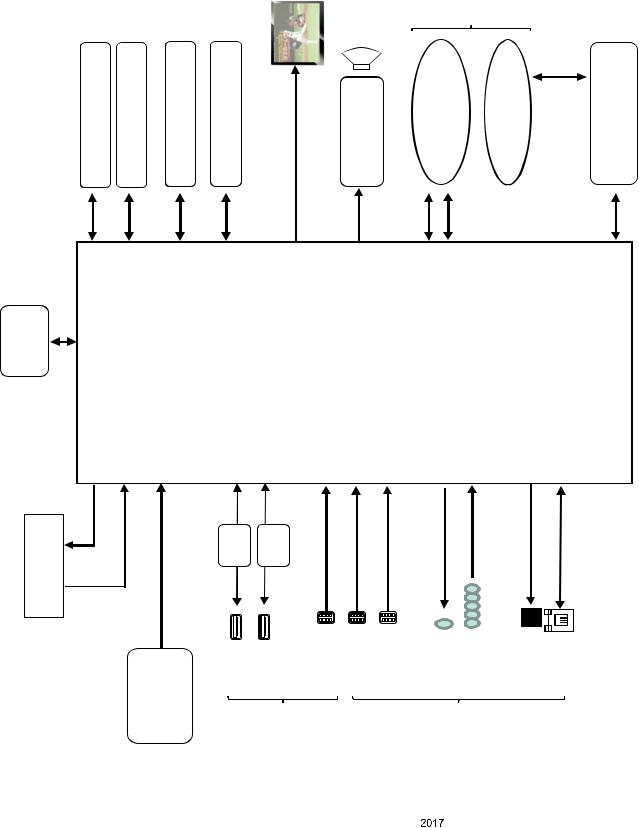
BLOCK DIAGRAM
1. Main SOC Block Diagram
|
|
|
|
|
|
|
|
|
|
|
SUB ASSY |
|
|
|
|
|
|
|
|
|
DDR3 2133 4Gb x16 |
DDR3 2133 4Gb x16 |
|
|
|
|
|
|
|
|
IR |
I2C KEY |
|
|
|||
|
|
EEPROM (256Kb) |
eMMC 5.1 (4GB) |
|
|
Audio AMP |
|
|
|
|
|
|
|
|
Sub Micom (R5F100GEAFB) |
|||
|
|
|
|
|
|
51P |
|
|
|
|
|
|
|
|
|
|
|
|
|
|
|
|
|
|
|
|
|
|
|
|
|
|
|
|
|
|
|
|
|
|
|
I2C |
M2R USB (Embedded) |
LVDS |
I2S I2C |
|
USB WIFI |
|
|
|
|
|
|
I2C |
|
|
X TAL 24MHz |
|
|
Digital Demod |
Analog Demod |
HDMI MUX |
|
CVBS/YPbPr |
SPDIF OUT |
|
|
ETHERNET |
|
||||||
|
|
|
|
|
|
|
|
|
|
|
|
|
|
|
|
|
|
|
|
P TS |
|
|
OCP 1.5A |
OCP 1.5A |
|
|
|
|
|
|
|
|
|
|
|
|
|
CI slot |
|
P TS |
|
|
|
|
|
|
|
|
|
|
|
|
|
|
||
|
|
|
(+/-) |
|
|
|
HDMI1 |
HDMI2 |
HDMI2 |
H/P REAR AV/COMP |
|
|
|
|
|
|
|
|
|
|
|
|
|
|
|
|
|
|
|
|
|
||||||
|
|
|
|
|
|
OPTIC |
|
|
|
|
|
|
||||||
|
|
|
Tuner |
USB1 |
USB2 SIDE |
|
LAN |
|
|
|||||||||
|
|
|
IF |
|
|
|
|
|
|
|
|
|
|
|
|
|
|
|
|
|
|
|
|
|
|
(ARC) |
|
|
|
|
|
|
|
|
|
|
|
|
|
|
REAR |
|
|
|
|
|
|
|
|
|
|
|
|
|
|
|
|
|
|
|
|
|
|
|
|
|
|
||||||||
|
|
|
|
|
|
|
- 11 - |
Copyright © |
|
LG Electronics. Inc. All rights reserved. |
||||||||
|
|
|
|
|
|
|
|
Only for training and service purposes. |
|
|
|
|
|
|
||||
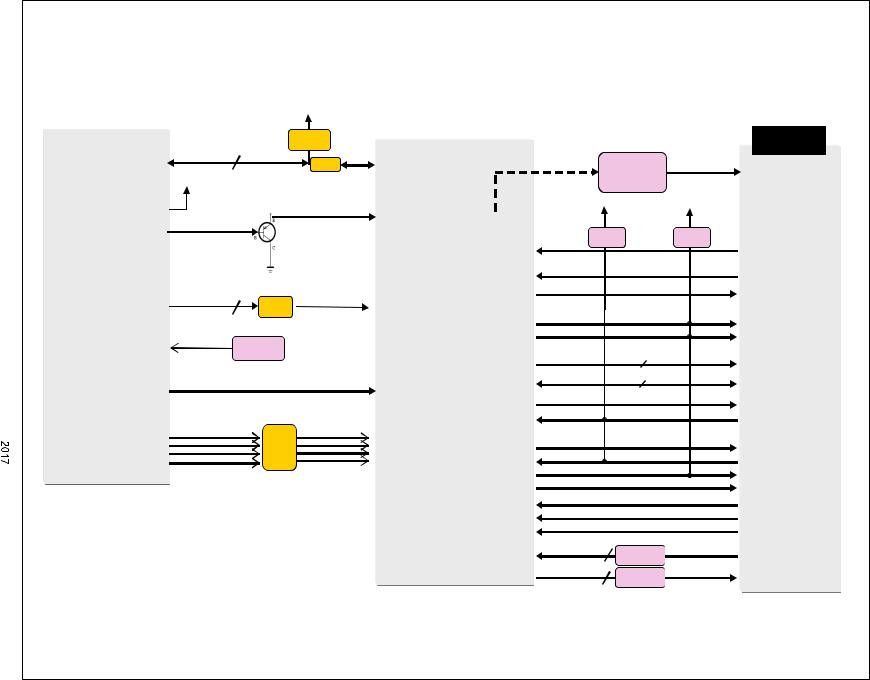
.reserved rights All .Inc .Electronics LG © Copyright - 12 - .purposes service and training for Only
|
+3.3V_TUNER |
MAIN |
|||
|
|
|
|
|
SOC |
TUNER |
|
1.2Kȳ |
|||
|
|
||||
|
I2C_SCL5 |
|
|||
|
|
||||
|
I2C_SDA5 |
|
|
|
|
[SCL_RF] 1 |
33 ȳ |
|
|
I2C_SCL_2 |
|
|
|||||
[SDL_RF] 2 |
|
|
|
I2C_SDA_2 |
|
+3.3V_RF
3.3V_RF 3 |
+3.3V_Tu |
|
CVBS |
||
|
CVBS 4
IF AGC 5  IF_AGC
IF_AGC
SIF 6
IF N 7
IF P 8
LNB 26
GND 27 IF_AGC_SAT 58
I_P_TU 59
I_N_TU 60
Q_N_TU 61
Q_P_TU 62
 SIF_P
SIF_P
IF_N/IF_P |
FILTER |
IP_T |
|
IM_T |
|
|
|
|
LNB_Out |
IC6900 |
|
|
|
IF_AGC_S_Soc
I_P_Soc
FILTER I_N_Soc
Q_P_Soc
Q_N_Soc
AN31 [DMD_ADC_INP]
AN32 [DMD_ADC_INN]
AL31[IF_AGC]
PCM_5V_CTL |
CI 5V |
+5V_CI_ON |
|
Power detect |
|
|
+5V_CI_ON |
+3.3V_NORMAL |
C25 [CAM_VCCEN_N]
C23[CAM_CD1_N] B23[CAM_CD2_N]
G28[TPI_VAL]
B25[CAM_CE1_N] B26[CAM_CE2_N]
B29 [EB_BE_N1]
E28 [EB_EB_N0]
[EB_ADDR_0~14]
[EB_DATA_0~7]
A24[CAM_RESET] C24[CAM_WAIT_N]
A25[CAM_REG_N] B24[CAM_IREQ_N] A32 [EB_OE_N] D28 [EB_WE_N]
P30 [TPO_CLK]
P29 [TPO_VAL]
N29 [TPO_SOP]
[TPI_DATA 0~7]
[TPO_DATA[ 0~7]
TPI_DATA [0-7]
TPO_DATA[0-7]
10K ȳ |
47K ȳ |
|
/CI_CD1,2 |
CI_TS_VAL /PCM_CE1.2
/PCM_IOWR /PCM_IORD
CI_ADDR[0-14]
CI_TS_DATA[0-7]
PCM_RESET
/PCM_WAIT PCM_INPACK
/PCM_REG
/PCM_IRQA
/PCM_OE
/PCM_WE
CI_IN_TS_CLK
CI_IN_TS_VAL
CI_IN_TS_SYNC
CI_TS_DATA[0-7]
100 ȳ
33 |
ȳ |
CI_IN_TS_DATA[0-7] |
|
CI Slot
VCC
/CI_CD1,2
CI_TS_VAL
/PCM_CE1.2
/PCM_IOWR /PCM_IORD
CI_ADDR[0-14]
CI_DAT[0-7]
PCM_RESET /PCM_WAIT PCM_INPACK /PCM_REG /PCM_IRQA
/PCM_OE
/PCM_WE
CI_IN_TS_CLK CI_IN_TS_VAL CI_IN_TS_SYNC
TPI_DATA[0-7]
CI_MDI[0-7]
CI + Tuner .2
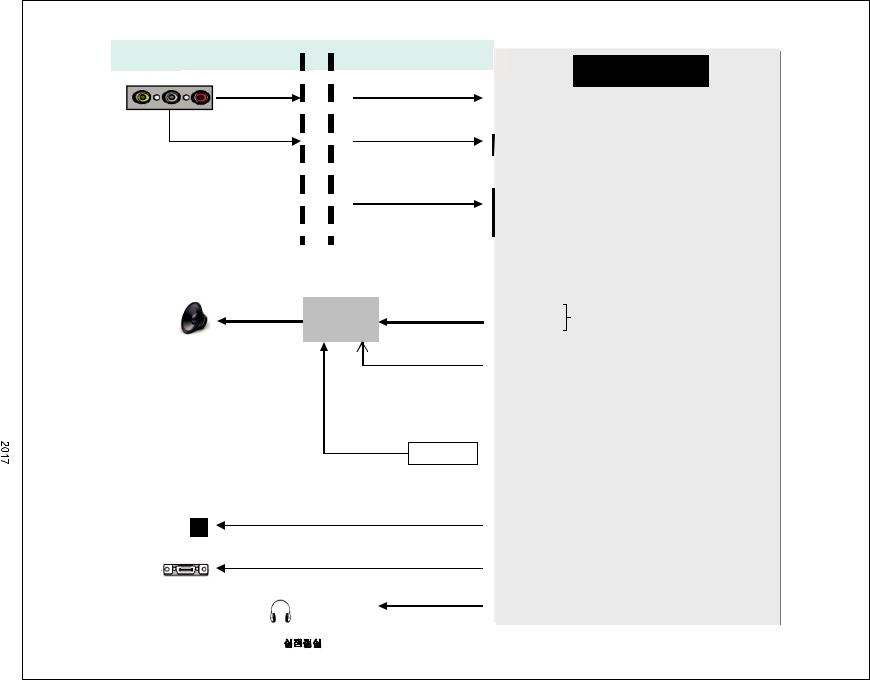
.reserved rights All .Inc .Electronics LG © Copyright - 13 - .purposes service and training for Only
AV |
Jack Side |
SOC Side |
Phone JA |
|
|
|
AV_CVBS_IN |
AV1_CVBS_IN_SOC |
COMP2/AV_L_IN COMP2/AV_R_IN
AUAD_L_CH2_IN
AUAD_R_CH2_IN
COMP2_SOG2_IN_SOC
COMP2_Y_IN_SOC
COMP2_Pb_IN_SOC
COMP2_Pr_IN_SOC
MAIN SOC
AM24 [CVBS_IN2]
AL18 [AUAD_L_CH2_IN
AM18 [AUAD_R_CH2_IN]
AM20 [SOY1_IN]
AN20 [Y1_IN]
AL21 [PB1_IN]
AM22 [PR1_IN]
Front Speaker
Audio AMP |
[SCK] |
I2S |
[LRCK] |
||
DTA2010M |
[DACLRCH] |
|
[I2C_SCL_0/SDA_0]
AMP_RESET [GPIO23]
MICOM
SPDIF OUT
SPDIF_OUT
ARC OUT
(HDMI1) SPDIF_OUT_ARC
H/P JACK |
HP_LOUT_JAC |
|
K |
|
HP_ROUT_JAC |
|
K |
|
( Only) |
AM14 [IEC958OUT]
[PHY0_ARC_OUT]
AL15 [AUDA_OUTL] AM15 [AUDA_OUTR]
IN/OUT Audio & Video .3
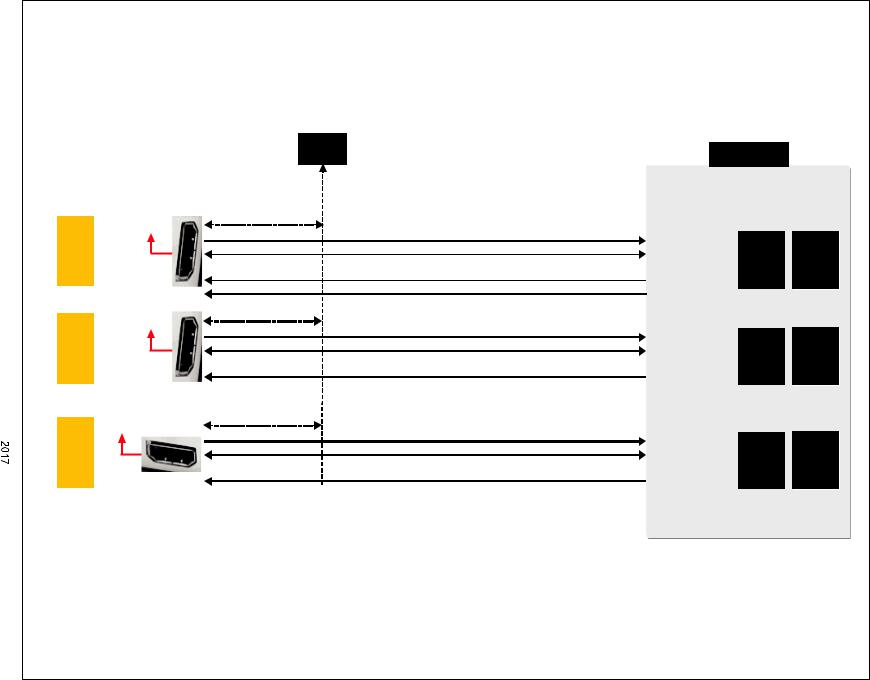
.reserved rights All .Inc .Electronics LG © Copyright - 14 - .purposes service and training for Only
+5V
HDMI 1
(1.4)_V
ARC
+5V
HDMI 2
(1.4)_H
+5V
HDMI 3
(1.4)_H
MICOM
CEC_REMOTE
Port_1
DDC_I2C_1
HDMI_HPD_1 SPDIF_OUT_ARC
CEC_REMOTE
Port_2 DDC_I2C_2
HDMI_HPD_2
CEC_REMOTE
Port_3
DDC_I2C_3
HDMI_HPD_3
MAIN SOC
[HDMI3_SDA] |
HDMI1.4 |
|
[HDMI3_SCL] |
||
LGE PHY |
||
[HDMI3_HPD] |
||
|
||
[PHY0_ARC_OUT] |
|
|
[HDMI2_SDA] |
|
|
HDMI2.0 |
||
[HDMI2_SCL] |
||
LGE PHY |
||
[HDMI2_HPD] |
||
|
||
[HDMI2_SDA] |
|
|
HDMI2.0 |
||
[HDMI2_SCL] |
||
LGE PHY |
||
[HDMI2_HPD] |
||
|
||
|
|
4.1 HDMI .4
HDCP1.4
HDCP1.4
HDCP1.4
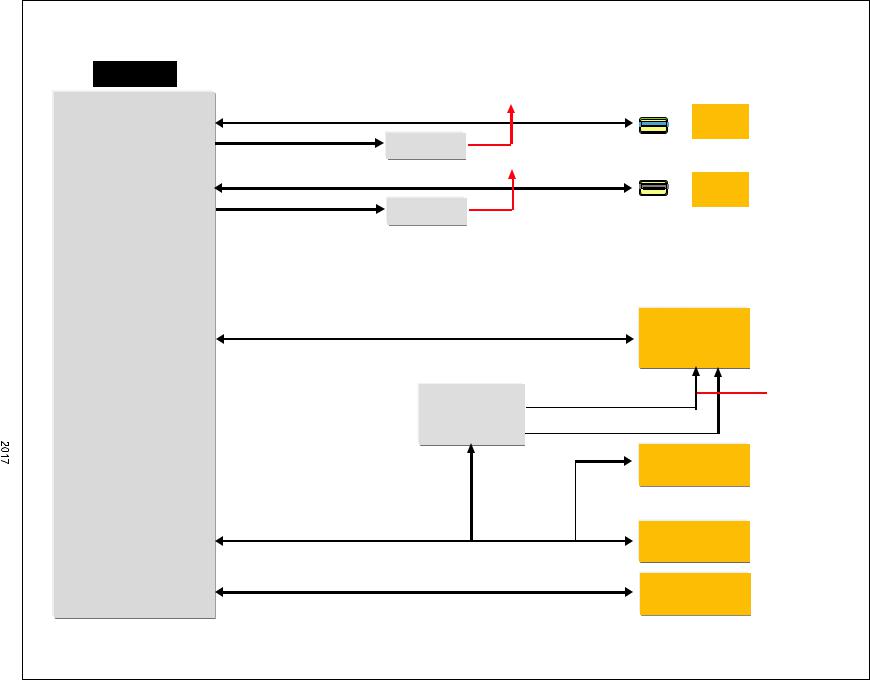
.reserved rights All .Inc .Electronics LG © Copyright - 15 - .purposes service and training for Only
MAN SOC
[USB2.0_2_DP0 / DM0]
[USB2.0_1_DP0 / DM0]
[USB2_2_DP0 / DM0]
[UART0_RXD/GPIO106] [UART0_TXD/GPIO105]
[UART1_RXD / TXD]
USB2.0_1_TX_DP0 / DM0 USB2.0_1_RX_DP0 / DM0 USB2.0_1_DP0 / DM0
USB_CTL1
USB2.0_2_DP1 / DM1 USB_CTL2
WIFI_DP / DM
SOC_RX/TX
UART1_RX/TX
+5V_USB_1
OCP
+5V_USB_2
OCP
WIFI_EN
MICOM WOL/WIFI_POWER_ON
SOC_RX/TX
SOC_RX/TX
USB 1 (2.0)_H
USB 2 (2.0)_H
IR + Wi-Fi
Wafer 25P
 +3.5V_WIFI
+3.5V_WIFI
UART wafer
RS232 IC
Debug Wafer
UART / Remote-M / Fi-Wi / USB .5
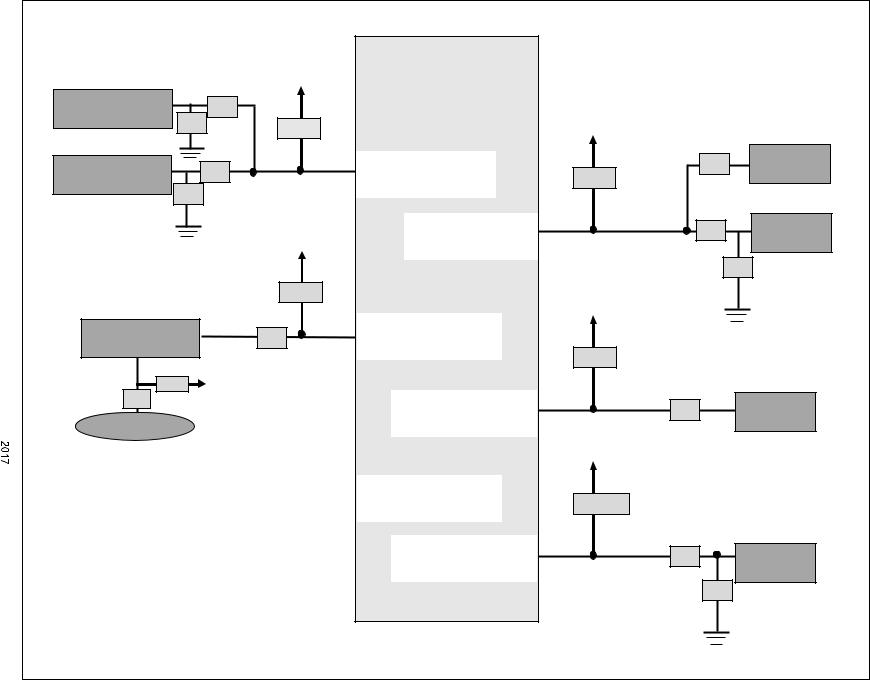
|
|
|
|
MAIN SOC |
|
I2C .6 |
|
|
|
+3.3V_NORMAL |
|
Map |
|
|
|
|
|
|
||
|
AUDIO AMP(IC5600) |
|
|
|
||
|
XWWG˟ |
|
+3.3V_TU |
|
||
|
|
33pF |
ZUZr˟ |
|
|
|
|
|
|
|
|
|
|
|
AUDIO AMP(IC5600) |
XWWG˟ |
I2C_SCL0: AK23[SCL0] |
ZZ˟ |
LNB |
|
|
I2C_SDA0: AJ23[SDA0] |
YU^r˟ |
|
|||
|
|
33pF |
|
|
||
|
|
|
|
|
|
|
|
|
|
+3.3V_NORMAL |
I2C_SCL3: AH24[SCL3] |
ZZ˟ |
TUNER (Demod) |
|
|
|
I2C_SDA3: AJ24[SDA3] |
|||
|
|
|
|
|
||
|
|
|
|
|
|
18pF |
|
|
|
ZUZr˟ |
|
+3.3V_NORMAL |
|
|
|
|
|
|
|
|
- |
|
MICOM |
ZZG˟ |
I2C_SCL1: AK22[SCL1] |
|
|
16 |
|
I2C_SDA1: AJ22[SDA1] |
|
|
||
|
|
|
ZUZr˟ |
|
||
- |
|
|
|
|
|
|
|
|
|
|
|
|
|
© Copyright training for Only |
EYE_I2C_SDA |
ZUZr˟ |
+3.5V_ST |
|
|
|
EYE_I2C_SCL |
XWW˟ |
|
I2C_SCL4: AJ21[SCL4] |
|
NVRAM |
|
|
|
|
ZZ˟ |
|||
|
|
|
I2C_SDA4: AH21[SDA4] |
|||
|
IR / KEY/EYE |
|
|
|
||
|
|
|
|
|
||
|
|
|
|
+3.3V_TU |
|
|
|
|
|
|
|
|
|
.Inc .Electronics LG .purposes service and |
|
|
|
I2C_SCL2: AH23[SCL2] |
|
|
|
|
|
I2C_SDA2: AH22[SDA2] |
XUYr˟GOl|P |
|
|
|
|
|
I2C_SCL5: AH25[SCL5] |
ZZ˟ |
Tuner |
|
|
|
|
I2C_SDA5: AH26[SDA5] |
|||
|
|
|
|
|||
All |
|
|
|
|
||
|
|
|
|
47pF |
||
.reserved rights |
|
|
|
|
||
|
|
|
|
|
|
|
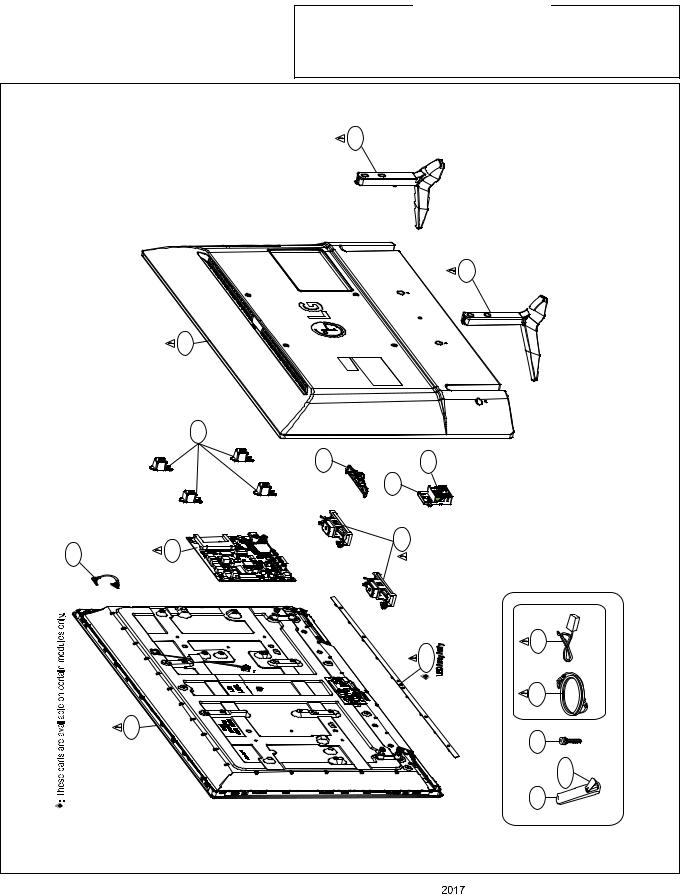
EXPLODED VIEW
IMPORTANT SAFETY NOTICE
Many electrical and mechanical parts in this chassis have special safety-related characteristics. These parts are identified by  in the EXPLODED VIEW.
in the EXPLODED VIEW.
It is essential that these special safety parts should be replaced with the same components as recommended in this manual to prevent Shock, Fire, or other Hazards.
Do not modify the original design without permission of manufacturer.
|
|
901 |
|
|
|
|
|
902 |
|
|
400 |
|
|
|
|
800 |
|
|
|
|
500 |
570 |
|
|
|
|
571 |
|
|
LV1 |
540 |
120 |
|
|
|
|
200A |
720 |
|
|
|
|
700 |
|
|
200 |
|
A10 |
Set + Stand |
|
|
|
|
ARC1 |
|
|
|
AR1 |
|
- 17 - |
Copyright © |
LG Electronics. Inc. All rights reserved. |
|
Only for training and service purposes. |
|
